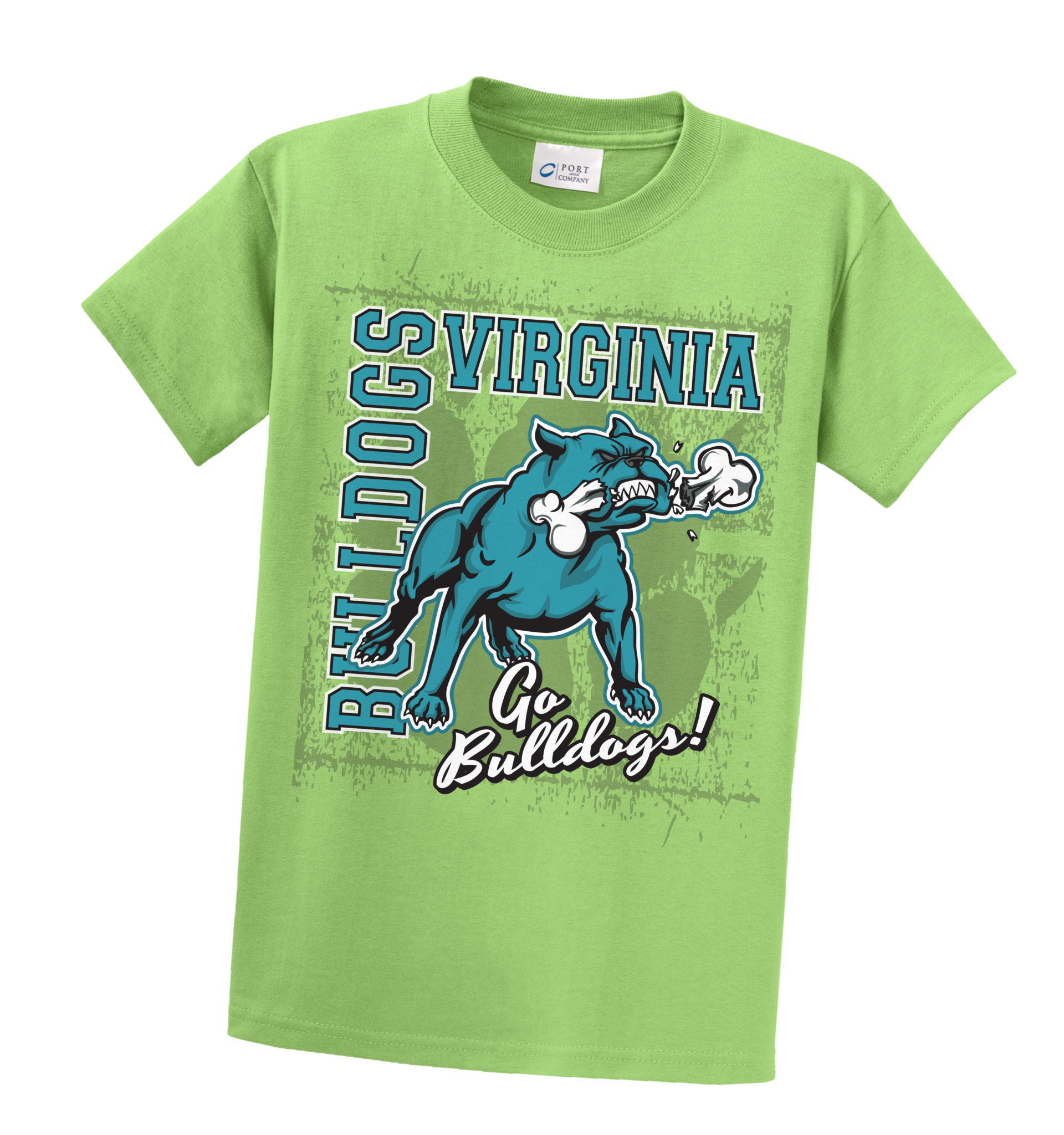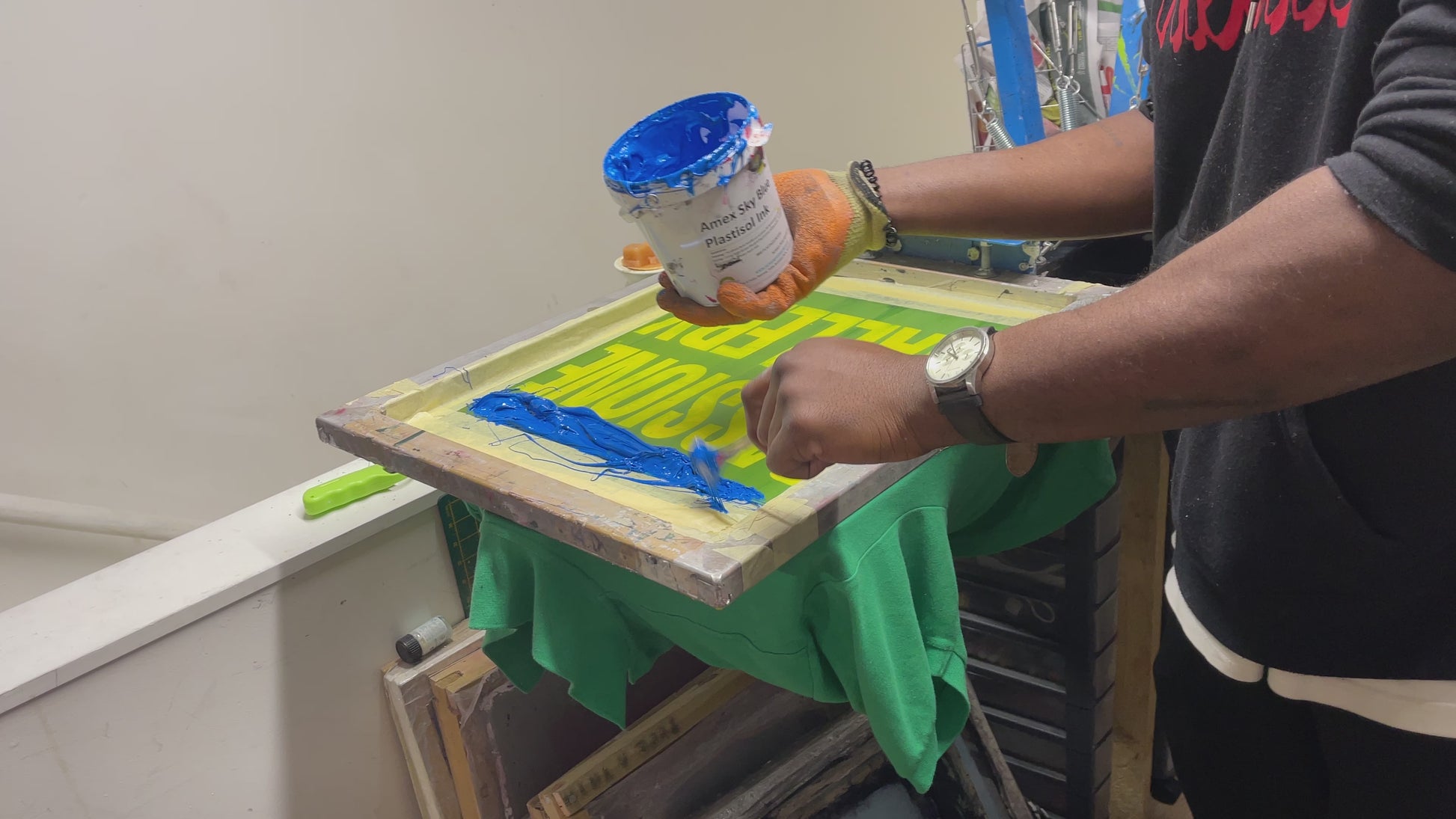Complete Screen Printing Kit for Artists and Creators
Wiki Article
Screen Printing Uncovered: Everything You Need to Understand About Tee and Garment Printing Strategies
If you've ever before wondered just how those dynamic layouts finish up on your preferred t-shirts, you're in the appropriate area. Screen printing is a remarkable approach that integrates art with technique, offering endless possibilities for creative thinking. Understanding the principles, from equipment to ink options, can greatly impact your outcomes. Ready to discover the important elements that make display publishing an art kind? Let's uncover the details that can raise your projects.
The Basics of Screen Printing: Just How It Functions
When you dive right into screen printing, you'll find it's both an art and a science. At its core, screen printing involves creating a pattern, or screen, that permits ink to go through just in particular locations (screen printing kit). You begin by selecting your design and preparing your screen with a light-sensitive emulsion. When you subject this emulsion to light, it sets, leaving your layout as an unfavorable space.Position the display over the textile, after that use a squeegee to press ink through the display onto the garment. Each step is vital, and grasping them will certainly boost your display printing abilities, transforming straightforward garments into one-of-a-kind, expressive pieces.
Sorts Of Display Printing Techniques
Once you comprehend the basics of screen printing, it's time to discover the numerous methods that can raise your layouts. One prominent method is typical display printing, where ink is pressed through a stenciled screen. This technique is terrific for bold, dynamic shades. There's water-based ink printing, which supplies a softer feel and is green, but it calls for a different strategy to treating.If you're aiming for fine details, think about discharge printing. This strategy removes color from the textile, leaving a soft, classic appearance. An additional alternative is plastisol printing, known for its resilience and dazzling colors, making it a favorite for numerous brand names. Experiment with halftone printing to develop slope impacts and complex styles. Each method has its special charm, so don't be reluctant to try them bent on find what fits your design best!
Crucial Tools for Screen Printing
To accomplish stunning lead to screen printing, having the ideal tools is fundamental. Initially, you'll require a durable screen printing structure, which holds the mesh that transfers your layout onto the garment. Next, invest in high-quality squeegees; these are necessary for using ink uniformly across the display. You'll additionally call for a good exposure system to create your screens, along with a washout booth for cleansing them after usage. A trustworthy heat resource, like a conveyor dryer or warm press, is crucial for healing your prints to ensure longevity. Do not neglect an appropriate work space, outfitted with tables and storage space for your materials. Protective equipment, such as handwear covers and masks, will certainly maintain you risk-free from chemicals and inks. With the right devices, you'll be well on your method to creating professional-quality prints.Picking the Right Inks and Materials
When choosing inks and products for display printing, you require to think about the kind of ink that functions ideal for your project. Consider textile compatibility to guarantee your styles look excellent and last long. Also, check out environmentally friendly ink options to make your printing procedure more sustainable.Sorts Of Display Inks
Choosing the right display ink is necessary for achieving vibrant, sturdy prints that fulfill your project's demands. There are numerous types of screen inks to take a look at. Specialty inks, such as metal or glow-in-the-dark, can include distinct effects to your styles.
Material Compatibility Factors To Consider
Comprehending material compatibility is essential for achieving premium display prints, especially because different materials react distinctively to different inks. Constantly examine your inks on sample textile to guarantee they stick properly and keep shade integrity. Additionally, keep in mind that material weight and texture can influence the last result, so choosing the appropriate ink and material combination is vital for your project's success.Eco-Friendly Ink Options
Environmentally friendly inks are coming to be a popular choice for display printers that want to minimize their environmental impact while preserving high quality. When choosing inks, think about water-based inks, which are less harmful and simpler to clean up compared to traditional solvents. These inks bond well with fabrics, supplying vivid results without hazardous chemicals. You may likewise discover eco-solvent inks that make use of fewer volatile natural substances (VOCs), making them a more secure alternative for both your wellness and the earth.In addition, look for inks made from renewable sources, such as soy or vegetable-based choices. By selecting the ideal inks and materials, you'll not only develop magnificent designs but also add to an extra lasting printing process. Make the switch, and your prints will certainly mirror your dedication to the environment!
Preparing Your Style for Display Printing

Submit Format Requirements
To ensure your style looks dynamic and sharp on material, you'll need to pay close attention to submit format requirements for screen printing. Make sure your design has a clear background to prevent undesirable white edges on your prints. Keep color modes in mind; CMYK is common for display printing, so transform your RGB creates accordingly.Shade Splitting Up Strategies
Shade splitting up is an essential action in preparing your style for screen printing, and mastering it can significantly boost your print high quality. You'll need to break your style into specific shades, as each shade needs a different screen during printing. Begin by determining all the shades in your design and produce layers each. You can utilize software application like Adobe Photoshop or Illustrator to isolate and different shades successfully. Be specific to conserve each layer as a separate file, normally in a layout like TIFF or PSD. This accuracy not just ensures exact color depiction yet additionally enhances the printing process. By taking notice of color splitting up, you'll accomplish vibrant and professional lead to your screen-printed garments.Resolution and Size
Accomplishing the very best lead to display printing starts with guaranteeing your style has the ideal resolution and size. Preferably, your art work needs to go to the very least 300 DPI (dots per inch) for sharp, clear prints. Your final product could look pixelated and less than professional. if you use lower resolution.When it pertains to size, take into consideration the measurements of your print location. Style your artwork to match the last print size, ideally creating it in the actual dimensions you'll be publishing. By doing this, you'll avoid any type of unanticipated scaling problems.
Constantly check your style in both vector and raster layouts. Vector graphics can be scaled without losing quality, making them ideal for display printing. Preparing appropriately will assure your style looks amazing on every garment!
Step-by-Step Display Printing Process
Display printing is a vibrant procedure that permits you to develop vivid layouts on various surfaces. To start, you'll require a screen, emulsion, and your selected ink. Prepare your screen by cleansing it thoroughly. Next off, use the solution uniformly and allow it completely dry in a dark area. As soon as completely dry, expose your display to light with your layout positioned on it, which will certainly harden the solution where the light hits, producing a pattern - screen printing kit.Put ink onto the screen and use a squeegee to press the ink with the stencil onto the material. Raise the screen thoroughly and let the print completely dry. You have actually efficiently display published your style.
Tips for Successful Screen Printing Projects
While you're diving right into your display printing projects, bear in mind that preparation is key to success. Beginning by gathering all your materials-- inks, garments, screens, and squeegees. A tidy work area assists prevent unwanted mistakes, so clean before you begin.Next, verify your art work is high-resolution and properly sized for your garment. Test your screen for proper direct exposure and clean it extensively to avoid spots. When mixing your inks, follow the maker's standards to achieve the right uniformity.
During printing, apply even pressure with your squeegee for consistent results. Do not rush; take your time to validate each print fulfills your criteria. After printing, allow your garments dry completely prior to taking care of or packaging them.
Finally, constantly maintain a sample of your benefit future reference. This way, you can examine your progress and boost your techniques gradually. Delighted printing!

Often Asked Concerns
How much time Does It Take to Establish a Display Printing Task?
Establishing up a screen printing work normally takes about 30 mins to an hour. You'll prepare the screens, mix inks, and change journalism. The time varies based upon intricacy and experience, so stay organized!Can I Print on Different Textile Enters Making Use Of the Same Technique?
Yes, you can print on different textile kinds making use of the very same strategy, however you'll require to change your setups and inks. Some materials absorb ink differently, so trying out warranties the best outcomes for every product.What Prevail Blunders to Avoid in Display Printing?
When screen printing, avoid typical t-shirt printing errors like making use of the wrong ink, overlooking proper direct exposure times, or missing pre-press checks. Constantly evaluate your configuration and preserve tidy displays to assure quality results each time.How Can I Effectively Tidy and Maintain My Screen Printing Devices?
To effectively tidy and preserve your display printing devices, you need to consistently clean screens with ideal solvents, inspect mops for wear, and ensure all devices are saved dry and dust-free. Uniformity prevents expensive repair services and boosts performance.Is Display Printing Environmentally Pleasant Compared to Other Techniques?
Screen printing can be a lot more environmentally pleasant than other approaches, especially if you make use of water-based inks and eco-conscious materials. By choosing lasting materials and practices, you decrease waste and lessen your influence on the earth.Screen Printing Uncovered: Whatever You Required to Know Concerning Tee and Garment Printing Techniques
At its core, display printing entails creating a stencil, or display, that enables ink to pass with only in particular areas. Placement the screen over the textile, then make use of a squeegee to push ink through the display onto the garment. One popular technique is typical screen printing, where ink is pressed through a stenciled display.When choosing inks and products for display printing, you require to take into account the type of ink that functions finest for your task.
Report this wiki page